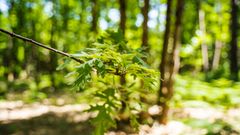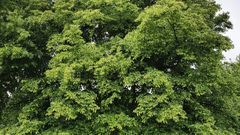

The Nordmann fir ( Abies nordmanniana ), from the Pinaceae family, is also called the "Caucasian fir " because of its geographical origins. It should not be confused with the common spruce whose cones droop, whereas the Nordmann has upright cones.
This species is very hardy and doesn't suffer spring frosts because it flowers later. It also tolerates calcareous or sandy soils.
The Nordmann Fir grows well in mountainous forests, at altitudes from 1000 to 2000m, in a humid, continental climate. The Nordmann fir flourishes in soil rich in humus, well drained, fresh, and slightly acidic. It can also withstand calcareous or sandy soils. The Nordmann Fir is quite sensitive to pollution, so it doesn't grow well in cities. This species is very hardy and doesn't suffer spring frosts because it blossoms later. It's suited to full sun exposure away from cold winds, but it can tolerate partial shade. During its first years, it should be staked, braced, and watered regularly.
Across the glove, the Nordmann Fir can be an alternative to any species of fir for reforestation and wood production for framing and joinery. Its white wood is also used for construction and producing pulp. The Nordmann Fir is often used as a Christmas tree because, unlike spruce, it doesn't lose its needles too quickly when exposed to heat.
As end of year celebrations approach, a Christmas tree is on everyone's mind! We all want to find the tree of our dreams, the one that will shine brightly and whose branches will blanket the gifts Santa Claus left. The Nordmann has been the leading Christmas tree in recent years: the king of kings, the one that doesn't lose its needles!
Christmas - the biggest holiday of the year - is the best opportunity to give a lasting gift. Surprise your loved ones with a young Normann Fir tree! After New Year's Day, the tree will continue to live and grow to become a great Christmas tree full of beauty and strength. Give a Nordmann tree, offer an original Christmas present that's sustainable and will continue to bring joy year after year! Gift a tree!
Our goal is to enable anyone to do something that benefits nature and helps us to live in a more harmonious world. So why not become a tree owner in a European forest and help combat climate change?






Please note that this is promotional communication. See our notice of information.